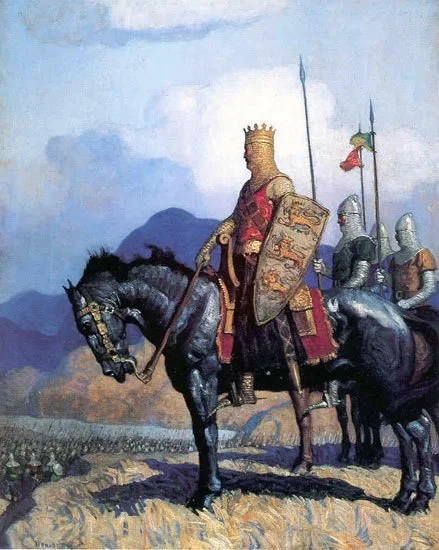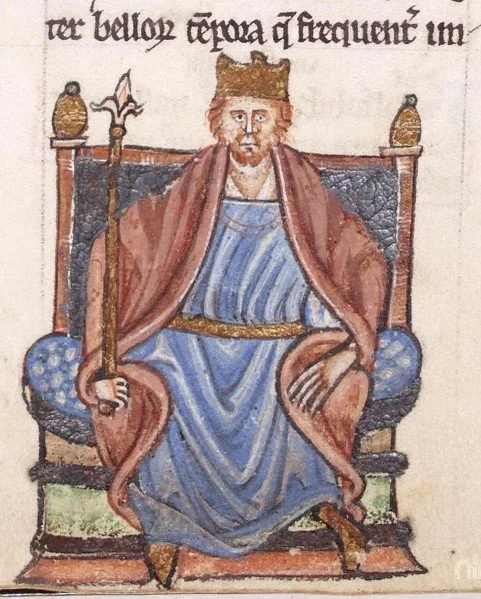WELCOME TO RACHEL’S BLOG
Scroll down to see the most recent posts, or use the search bar to find previous blogs, news, and other updates

Richard the Lionheart at Sixteen: the Making of a Warrior Duke
In 1173, a boy of sixteen took his first step onto the stage of war. His name was Richard, Duke of Aquitaine, though he had yet to earn the epithet Lionheart.
Before he became the crusader-king of legend, before his songs and sieges, Richard was a restless teenager thrust into the most dangerous political storm of the twelfth century: the Great Rebellion against his father, King Henry II.
It was a rebellion born of pride, family betrayal, and the impossible weight of expectation. And it was here — amid defeat, shame, and fire — that the making of a warrior began.
A Son in His Mother’s Shadow
Richard was Eleanor of Aquitaine’s favourite son, and in many ways her reflection: intelligent, impulsive, proud. Born in Oxford but raised in the cultured courts of Poitiers and Bordeaux, he was steeped in his mother’s world of poetry and politics. By his mid-teens he could compose in Occitan, debate theology in Latin, and command a hall full of barons — yet he was still a boy in a man’s game.
In 1172, Henry II had forced Eleanor to surrender the duchy of Aquitaine to her teenage son, intending to bind the region more tightly to the English crown. But Aquitaine was Eleanor’s inheritance, her life’s work, and Richard was fiercely loyal to her. The gift was both a promotion and a trap: the young duke found himself governing a proud and fractious land, surrounded by lords twice his age and loyalty only thinly pledged.
When the rebellion of 1173 began, Richard stood between two worlds — son of a king, heir to a duchy, and caught between the two towering figures who defined his destiny.

Medieval Succession: When Henry II’s Empire Imploded
When Succession first aired, audiences were transfixed by its portrait of a modern dynasty at war with itself: scheming heirs, a manipulative patriarch, and a fortune vast enough to make loyalty negotiable. But centuries before Logan Roy was terrifying his children in glass-walled boardrooms, another ruthless family feud was playing out across medieval Europe.
In 1173, the most powerful man in Christendom—King Henry II of England—faced a rebellion led not by rivals or barons, but by his own wife and sons. Chroniclers called it the Great Rebellion; historians often dub it the Revolt of the Eaglets, after the young “eagles” who turned on the parent bird.
And just like in Succession, the real question was: who inherits the empire?

Richard de Brito: The Forgotten Killer; and a very Dangerous Friend
In legend he struck the final blow; in fiction, he will cause a torrent of trouble for his friend William FitzErneis in Lady of Lincoln.
When Archbishop Thomas Becket was cut down before the altar of Canterbury Cathedral in December 1170, the man who delivered the fatal stroke was Richard de Brito—sometimes styled le Breton. His sword, witnesses said, split Becket’s skull so deeply that the blade snapped on the flagstones.
Unlike the other knights, de Brito cried out as he struck:
“Take that for the love of my lord William FitzEmpress!”
The words stunned those who heard them. He was killing the archbishop not in Henry II’s name, but in that of Henry’s brother—the late William FitzEmpress, Henry II’s brother.

Hugh de Morville: The Knight Who Would Not Repent
Lord of Westmorland and Knaresborough, de Morville escaped execution, but not history’s judgment.
When Thomas Becket fell beneath the knights’ swords on that winter night in Canterbury, Hugh de Morville was there, but whether he struck or simply stood aside remains one of history’s greyest shadows.
He was the oldest of the four and the most powerful: Lord of Westmorland and Knaresborough, baron of the north, and keeper of one of the most formidable castles in England. While Reginald FitzUrse raged, William de Tracy hesitated, and Richard de Brito delivered the fatal blow, de Morville watched . But his silence proved to be as damning as any sword.

William de Tracy: The Penitent Knight of Canterbury
William de Tracy helped slay Thomas Becket—then sought forgiveness on a pilgrimage to Rome and the Holy Land. Can a murderer find redemption?
On that bitter December evening in 1170, when Thomas Becket, the Archbishop of Canterbury, fell beneath four flashing swords, one of those four blades belonged to Sir William de Tracy. Chroniclers called him the calmest of the murderers; steady-handed, methodical, a man who believed he was acting under royal command. Yet for the rest of his life, remorse and infamy would drive him abroad.

Reginald FitzUrse: The Bear Knight Who Slayed a Saint
On 29 December 1170, four armed knights pushed through the freezing rain towards Canterbury Cathedral. Their leader was Reginald FitzUrse—a man whose very name meant “son of the bear.” He would live up to it in every sense: fierce, proud, and dangerously impulsive.
When Thomas Becket fell beneath their swords that night, FitzUrse’s roar echoed through the nave. It was he who first laid hands on the archbishop, striking the blow that turned a quarrel between king and church into one of the most shocking crimes of the Middle Ages.
A Knight of the King’s Household
Little is known of FitzUrse’s early life. He came from a respectable Somerset family, holding lands at Willeton and Barham. Like many younger sons of the gentry, he found advancement in royal service. By the 1160s he was one of Henry II’s household knights—trusted, well-paid, and fiercely loyal to the king who rewarded courage and obedience above all else.
That loyalty, however, would prove fatal.

The Shadow of Becket: How a Murder Shook the Kingdom
For years, the quarrel between Henry II and Thomas Becket raged. Becket fled to France in 1164, finding refuge with King Louis VII—the same Louis who still burned with resentment against Henry II for marrying Eleanor of Aquitaine. The dispute became as much about politics as faith: two monarchs using one archbishop as a pawn.
In 1170, Henry and Becket made a fragile peace. The archbishop returned to England to cheers from the faithful. But within weeks, their conflict flared again when Becket excommunicated bishops loyal to the crown.
It was then, in a moment of fury, that Henry uttered the words chroniclers would never forget—perhaps not verbatim, but in essence:
“Will no one rid me of this turbulent priest?”
Four knights took him at his word.

LADY OF LINCOLN Cover Reveal!
I’m overjoyed to share the cover of my debut historical novel, LADY OF LINCOLN — a story inspired by one of England’s most extraordinary medieval women, Nicola de la Haye, and longlisted for the Chaucer Award for Historical Fiction.
A Woman Who Defied Kings
LADY OF LINCOLN opens in the twelfth century, amid brewing rebellion. This is the untold story of the eventful early life of a noblewoman and castellan who would become known as “the woman who saved England.”
Medieval England.
A Civil war.
A teenage heiress.
A disastrous marriage.
What happens when a girl expected to yield… chooses to lead?

Eleanor of Aquitaine: Queen, Duchess, and Mother of Rebels
When their sons grew to manhood, Eleanor encouraged them to demand their inheritance. Henry the Young King, Richard, and Geoffrey wanted lands to rule; Henry II refused. In 1173, when the princes fled to France, Eleanor supported them. Chroniclers later claimed she disguised herself as a man to join them—an image that has haunted legend ever since.
Her rebellion failed. Henry II’s forces captured her later that year while she travelled through Poitou. For the next sixteen years she was kept under guard, a queen turned prisoner. Yet even captivity could not erase her influence: her sons would continue to fight in her name.


Henry II of England – The Jailer of Queens
When Henry of Anjou (later Henry II, also known as Henry Plantagenet) married Eleanor of Aquitaine in 1152, they created a political alliance of breath taking scale. Henry was heir to the English throne; Eleanor, just divorced from King Louis VII of France, brought with her the duchy of Aquitaine, one of the wealthiest and most independent regions in Europe.
For a time, their marriage was a true partnership. Eleanor rode beside Henry on campaign, governed Aquitaine in his name, and bore him eight children. Together, they forged the Angevin Empire stretching from the Scottish borders to the Pyrenees.
But power and passion soured into mistrust. By the 1170s, the marriage had collapsed into open hostility.

Why the Angevins (Plantagenets) Ruled Half of Europe
When we think of medieval kings, we often picture a crown perched over a single kingdom. But Henry II of England—first of the Angevin kings—was no ordinary ruler. By the 1170s, he commanded more territory than any other monarch in Christendom, stretching from the wild hills of Northumberland to the sunlit vineyards of Aquitaine. His dominion was so vast that chroniclers called it an “empire,” though it was stitched together by marriage, inheritance, and sheer force of will.
So how did a French count’s son come to rule half of Europe?

Geoffrey of Anjou: The Handsome Count Who Founded the Plantagenet Dynasty (Died 7th September 1151)
On September 7, 1151, Geoffrey of Anjou — known as “le Bel” or “the Handsome” — collapsed with a sudden fever and died at just 38 years old.
He was never king. He never wore a crown.
And yet, Geoffrey Plantagenet shaped the medieval world more than many monarchs.
Without him, there would be no Henry II, no Richard the Lionheart, no King John and Magna Carta, and no centuries-long Plantagenet dynasty. Geoffrey’s story isn’t just a footnote — it’s the spark that set medieval England ablaze.

The Battle of Fornham: When a Countess Rode to War and Changed Medieval England Forever
In the mist-shrouded dawn of October 17, 1173, near the quiet Suffolk village of Fornham St. Genevieve, history was about to witness something remarkable. Not just another medieval battle between king and rebels, but the extraordinary tale of a countess who donned armor, took up lance and shield, and rode into battle alongside her husband against the Crown itself.
This is the story of Petronilla de Grandmesnil, Countess of Leicester – a woman whose courage would echo through the centuries, and whose fall into a muddy ditch would become one of the most memorable moments of medieval English warfare.
